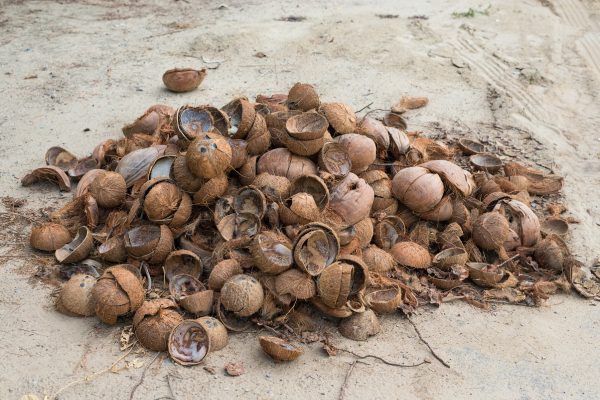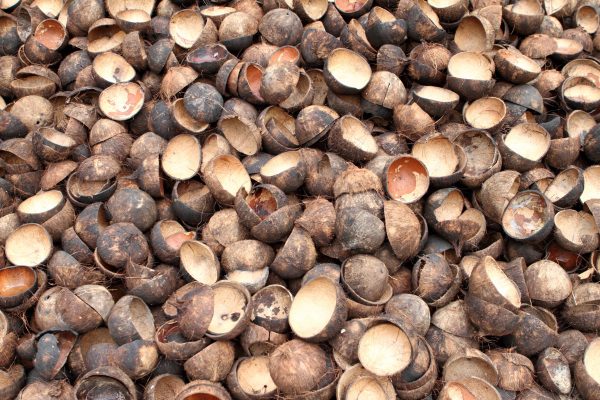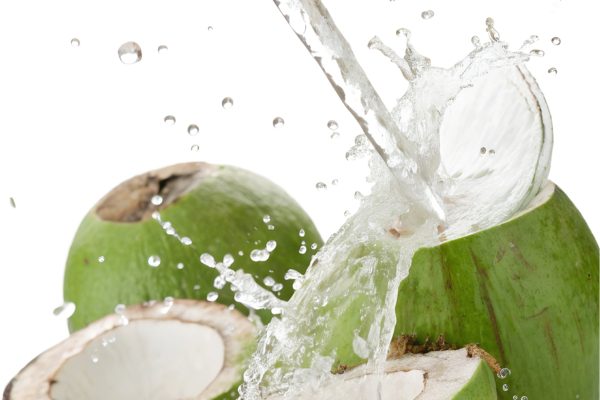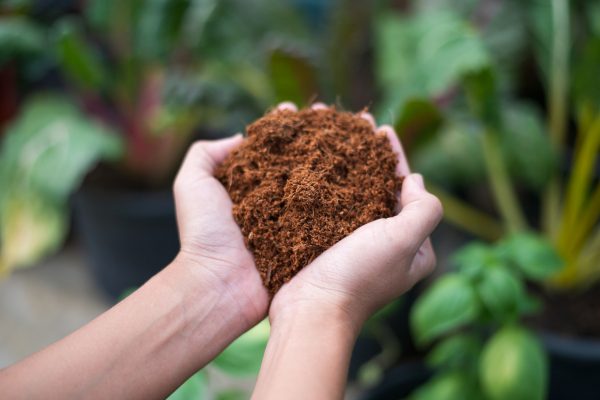

Countless gardeners toss coconut shells in the trash, believing they’re impossible to compost. This common misconception robs gardens of valuable organic matter and contributes unnecessarily to landfill waste. The truth might surprise you.
Yes, you can absolutely compost all parts of coconut – the meat, water, shells, and coir. While coconut shells require 1-2 years to fully decompose, faster methods exist to speed up the process. Each coconut component offers unique benefits for your compost pile.
Composting coconut improves soil structure, enhances moisture retention, and provides slow-release nutrients. The high carbon content in coconut shells makes them excellent brown material for balancing your compost. Even coconut water adds valuable minerals to enrich your pile.
This comprehensive guide covers composting techniques for each coconut part, decomposition timelines, troubleshooting common issues, and expert tips. You’ll discover how to transform tough coconut shells into garden gold and why some cities ban them from municipal programs.
Yes, every part of the coconut is compostable, though each component breaks down at different rates. Understanding these timelines helps you plan your composting strategy effectively.
Coconut composting timeline at a glance:
Success depends on three key factors: particle size, moisture balance, and proper carbon-to-nitrogen ratios. Smaller pieces always decompose faster, making preparation crucial for efficient composting.
For detailed guidance on each coconut component, jump to the specific sections below. Learn proven methods to accelerate decomposition and maximize nutrient benefits for your garden.

Coconut shells contain high levels of lignin and cellulose, making them incredibly durable. These complex compounds give coconuts their protective properties but also explain why coconut shell decomposition takes significantly longer than typical kitchen scraps.
Unlike soft organic matter that breaks down through bacterial action, coconut shells require fungal decomposition. Fungi produce specialized enzymes that break down lignin, a process bacteria cannot efficiently perform. This fundamental difference affects how you should approach coconut composting.
The woody nature of coconut shells means they’re primarily carbon-rich brown material. Understanding this helps you balance your compost pile correctly and set realistic expectations for decomposition timeframes.
Coconut shells have an exceptionally high carbon-to-nitrogen ratio of 100:1. This makes them extremely carbon-rich compared to the ideal compost ratio of 30:1. Balancing this requires careful planning and additional nitrogen sources.
| Coconut Component | C:N Ratio | Classification |
|---|---|---|
| Coconut shells | 100:1 | High carbon (brown) |
| Coconut meat | 40:1 | Moderate carbon |
| Coconut coir | 80:1 | High carbon (brown) |
| Ideal compost mix | 30:1 | Balanced |
To maintain proper balance when composting coconut, add plenty of nitrogen-rich green materials. Kitchen scraps, grass clippings, and fresh leaves help offset the high carbon content. This balance ensures efficient decomposition and prevents your pile from stalling.
Fresh coconut meat composts readily when properly prepared. Start by scraping the meat from the shell and chopping it into pieces smaller than one inch. This increases surface area for microbial activity and speeds decomposition significantly.
The oil content in coconut meat requires special consideration. While small amounts won’t harm your compost, excessive coconut oil can create anaerobic pockets. Mix coconut meat thoroughly with dry, absorbent materials like shredded cardboard or dried leaves.
Fresh coconut meat decomposes faster than dried copra due to higher moisture content. However, dried coconut works well too – just ensure it’s unsweetened and free from preservatives. Shredded coconut from cooking breaks down even quicker than chunks.
Under optimal conditions, coconut meat fully decomposes within 2-4 weeks. Temperature, moisture, and particle size all influence this timeline. Smaller pieces in a hot compost pile may break down in as little as 10 days.
Watch for these signs of successful coconut meat decomposition:
Regular turning accelerates the process by distributing oils and maintaining aerobic conditions. If you notice any rancid smells, add more brown materials and increase aeration immediately.

New York City’s composting program specifically excludes coconut shells due to their extended decomposition time. Municipal facilities operate on tight schedules, typically producing finished compost within 8-12 weeks. Coconut shells simply don’t fit this timeline.
Large-scale operations lack the time for specialized handling that coconut shells require. The shells can damage industrial grinders and contaminate batches meant for quick turnaround. These limitations don’t apply to home composting, where patience yields results.
Home composters can dedicate space and time to properly break down coconut shells. With the right techniques, you’ll transform these tough materials into valuable soil amendments that municipal programs miss out on.
Successfully composting coconut shells starts with proper size reduction. The smaller the pieces, the faster decomposition occurs. Here are proven methods ranked by effectiveness:
1. Power Shredder Method (Fastest)
2. Hammer and Bag Technique
3. Saw Cutting Method
4. Soaking Pre-treatment
Transform those stubborn coconut shells into compost faster with these proven acceleration techniques. Size matters most – aim for pieces no larger than a coin for optimal results.
Pre-soaking shells before adding to compost jumpstarts the breakdown process. The water penetrates the tough fibers, creating entry points for decomposing organisms. After soaking, the softened shells break apart more easily during regular pile turning.
Compost accelerators containing beneficial microbes can reduce decomposition time by several months. Products with fungal inoculants work particularly well since fungi excel at breaking down lignin. Apply according to package directions when first adding shells to your pile.
Maintaining proper moisture and turning frequency keeps decomposition active. Coconut shells should feel damp but not waterlogged. Turn your pile every two weeks to distribute moisture and encourage aerobic breakdown.

Coconut water serves as a natural compost enhancer packed with essential minerals. This clear liquid contains significant amounts of potassium, magnesium, and calcium that benefit both microorganisms and eventual plant growth.
The potassium content in coconut water particularly stands out. This nutrient supports strong plant cell walls and improves disease resistance. Magnesium aids chlorophyll production, while calcium strengthens plant structure and improves nutrient uptake.
Beyond major minerals, coconut water provides trace elements and natural sugars. These sugars feed beneficial microbes, accelerating overall compost activity. The result is faster decomposition and richer finished compost.
While coconut water benefits compost, too much liquid can create problems. Excess moisture leads to anaerobic conditions, producing foul odors and slowing decomposition. Balance is crucial for success.
Signs of excess moisture from coconut water:
Distribute coconut water evenly throughout your pile rather than dumping it in one spot. Mix immediately with dry materials like straw or shredded paper. This prevents moisture pockets and maintains proper aeration.
For every cup of coconut water added, incorporate two cups of dry brown material. This ratio maintains the ideal moisture level – damp like a wrung-out sponge. Monitor your pile closely for the first few days after adding coconut water.

Coconut coir brings exceptional structural benefits to any compost pile. This fibrous material from coconut husks creates air pockets that improve oxygen flow throughout your compost. Better aeration means faster, more efficient decomposition.
The moisture retention properties of coir prove invaluable during dry periods. Coir can hold up to nine times its weight in water while still maintaining good drainage. Your compost stays consistently moist without becoming waterlogged.
Coir’s neutral pH and resistance to compaction make it ideal for compost bugs. Beneficial organisms thrive in the stable environment coir provides. The slow decomposition rate means these benefits last throughout the entire composting cycle.
Adding coir also reduces the need for turning. The natural springiness maintains pile structure even under weight. This saves labor while ensuring consistent results.
Fresh coconut husks require different handling than processed coir products. Fresh husks should be separated into fibers by soaking in water for several weeks. This natural retting process loosens the fibers for easier composting.
Commercial coir blocks need rehydration before use. Soak compressed blocks in water until they expand fully – usually 20-30 minutes. Break apart any clumps to ensure even distribution in your compost pile.
Coconut coir from old mattresses can be composted but requires extra care. Remove any synthetic binding materials first. The coir itself may be treated with fire retardants, so use sparingly and avoid using finished compost on edible plants.
Processing tips by source:
Before committing coconut shells to your compost pile, consider these valuable alternative uses. Many gardeners find these applications provide more immediate benefits than waiting for decomposition.
Natural Planter Creations
Cut coconut shells in half to create unique, biodegradable planters. These work exceptionally well for orchids and air plants. The natural drainage and breathability suit epiphytic plants perfectly. Shells last 2-3 years before breaking down.
Biochar Production
Converting coconut shells to biochar provides long-lasting soil benefits. Biochar improves soil structure, increases water retention, and provides habitat for beneficial microbes. The process locks carbon in soil for decades rather than releasing it during decomposition.
Hugelkultur Bed Construction
Large coconut shell pieces work excellently in hugelkultur beds. Layer them with other woody materials at the base of raised beds. As shells slowly break down over 5-10 years, they release nutrients and improve drainage.
Garden Mulch Application
Chipped coconut shells make attractive, long-lasting mulch. They suppress weeds effectively and retain moisture better than wood chips. The slow decomposition means less frequent replacement compared to other organic mulches.
Finding intact coconut shells after a year indicates insufficient preparation or poor composting conditions. The most common cause is inadequate size reduction. Shells larger than 2 inches simply take too long to decompose.
Check moisture levels throughout your pile. Dry conditions halt decomposition, especially for tough materials like coconut shells. The shells should feel consistently damp. Add water during turning if needed.
Fungal activity drives coconut shell breakdown. If you see no white fungal threads on shells, your pile may lack the right organisms. Add finished compost or forest soil to introduce decomposer fungi. Consider a commercial fungal inoculant for faster results.
Temperature also affects decomposition speed. Cold piles decompose slowly. Rebuild your pile with proper green-brown ratios to reactivate heating. Position shells in the hot center rather than cool edges.
Oily patches in compost indicate excessive coconut meat or poor mixing. These greasy areas repel water and create anaerobic zones. Address this immediately to prevent odor problems and maintain pile health.
First, remove any visible oil concentrations along with surrounding material. Mix this material with highly absorbent browns like sawdust or shredded paper in a 1:3 ratio. Let this mixture sit separately for a week before returning to the main pile.
Increase pile aeration to help break down remaining oils. Turn more frequently – every 3-4 days initially. Add coarse materials like wood chips to improve air flow. The extra oxygen helps microbes metabolize fats more efficiently.
Sweet coconut meat and water can attract unwanted pests to your compost. Rats, raccoons, and insects find these ingredients particularly appealing. Proper management prevents these visitors while maintaining effective composting.
Always bury coconut materials at least 12 inches deep in your pile. Cover with brown materials immediately after adding. This barrier reduces odors that attract pests and makes access more difficult.
For persistent pest problems, consider these solutions:
The high carbon content of coconut materials can throw off your compost balance. Signs include slow decomposition, low pile temperature, and a dry, brown appearance throughout. Restoration requires strategic nitrogen additions.
Calculate how much coconut material you’ve added, then add nitrogen-rich greens at a 1:3 ratio. Fresh grass clippings, vegetable scraps, and coffee grounds work well. Distribute these greens evenly while turning.
Monitor pile temperature after rebalancing. Within 24-48 hours, temperature should rise noticeably. If not, add more nitrogen sources and ensure adequate moisture. The pile should feel like a damp sponge throughout.
Worms can process certain coconut materials effectively, though shells require special preparation. Red wigglers particularly enjoy coconut coir as bedding material. It provides excellent structure while retaining moisture worms need.
For coconut shells in worm bins, extreme size reduction is essential. Pieces must be smaller than 1/4 inch – essentially sawdust size. Larger pieces persist for years without decomposing. Use only small amounts mixed with other foods.
Coconut meat works well in vermicomposting when used sparingly. The oil content can harm worms in large quantities. Add no more than 10% coconut meat to any feeding. Mix thoroughly with other materials to prevent oil concentration.
Prepared coconut coir serves as ideal worm bedding lasting 6-12 months. It maintains moisture while providing good aeration. Worms readily consume coir as it breaks down, producing high-quality castings.
Seasoned composters have developed techniques that dramatically improve coconut composting success. Their collective wisdom can save you months of trial and error.
Strategic Green Pairing
Combine high-carbon coconut materials with super-nitrogen sources. Pair coconut shells specifically with fresh chicken manure or blood meal at a 20:1 ratio. This aggressive nitrogen boost counteracts the extreme carbon levels.
Seasonal Timing Matters
Start coconut composting in late spring or early summer. The warm months provide optimal temperatures for the slow decomposition process. Winter-started coconut rarely breaks down effectively before the following year.
Industrial Insights Applied
Commercial operations using copra meal achieve rapid breakdown through fine grinding and moisture control. Replicate this by keeping coconut materials consistently moist and as small as possible. Some home composters use old blenders for ultimate size reduction.
Community Pile Benefits
Large community compost piles maintain higher temperatures longer. If available, add your prepared coconut materials to community piles. The sustained heat significantly reduces decomposition time compared to small home piles.
Composting coconut shells diverts substantial waste from landfills where they’d persist for decades. In landfills, coconut materials decompose anaerobically, producing methane – a greenhouse gas 25 times more potent than carbon dioxide.

Home composting transforms this waste into valuable soil amendment while sequestering carbon. The finished compost stores carbon in soil for years, improving soil health while fighting climate change. Every coconut composted represents a small but meaningful environmental victory.
Supporting the circular economy, coconut composting closes the loop on agricultural waste. Rather than treating coconut shells as disposal problems, we transform them into resources. This mindset shift benefits gardens and the planet simultaneously.
The slow decomposition of coconut materials provides long-term soil structure benefits. Unlike quick-composting materials, coconut components continue improving soil years after application. This extended benefit multiplies the positive environmental impact.
Whole coconut shells take 1-2 years to fully decompose under typical home composting conditions. However, proper preparation dramatically reduces this timeline. Shells broken into coin-sized pieces decompose in 6-12 months with good management.
Several factors affect decomposition speed. Hot compost piles break down shells faster than cold piles. Consistent moisture and regular turning also accelerate the process. Some gardeners report complete breakdown in just 4 months using optimal techniques.
Yes, moldy coconut actually composts more readily than fresh coconut. The mold indicates decomposition has already begun, giving you a head start. Add moldy coconut directly to your compost pile without concerns.
The existing mold introduces beneficial decomposer organisms to your pile. These organisms continue breaking down the coconut while spreading to other materials. Just ensure proper pile balance to prevent any unpleasant odors.
Small amounts of coconut oil won’t harm your compost, but excessive oil creates problems. Oil forms water-repelling barriers that create anaerobic pockets. These zones produce foul odors and slow overall decomposition.
Limit coconut oil to trace amounts naturally present in coconut meat. If you’ve added too much oily material, balance with highly absorbent browns. Increased turning also helps distribute and break down oils.
Coconut shells make excellent long-lasting mulch when chipped appropriately. They suppress weeds effectively, retain soil moisture, and look attractive in garden beds. The slow decomposition means less frequent replacement than wood mulch.
Chip shells to 1-2 inch pieces for mulch use. Smaller pieces decompose too quickly, while larger pieces look untidy. Apply 2-3 inches deep around plants, keeping mulch away from stems to prevent rot.
While specific bacteria like Rhizobacter gummiphilus can degrade coconut materials, you don’t need to add them. These organisms naturally occur in healthy compost piles. Focus instead on creating conditions that support diverse microbial life.
Adding finished compost or forest soil introduces beneficial decomposers including specialized fungi. These organisms multiply rapidly when conditions are right. Maintain proper moisture, aeration, and temperature to support their growth.
Composting coconut transforms challenging waste into valuable garden resources. Every coconut component – meat, water, shells, and coir – can enrich your compost pile when handled correctly. While shells demand patience and preparation, the long-term benefits justify the effort.
Remember that coconut meat composts quickly, water adds vital nutrients, and coir provides structure. Shells, despite their 1-2 year timeline, create lasting soil improvements. Proper size reduction and pile management accelerate all decomposition processes.
Start your coconut composting journey with easier components like meat and coir. Build confidence and experience before tackling shells. This progressive approach ensures success while you develop techniques that work for your specific conditions.
View coconut waste as an opportunity, not a disposal problem. Each coconut you compost reduces landfill burden while building healthier soil. Your garden will thank you with improved structure, better moisture retention, and sustained nutrient release for years to come.
